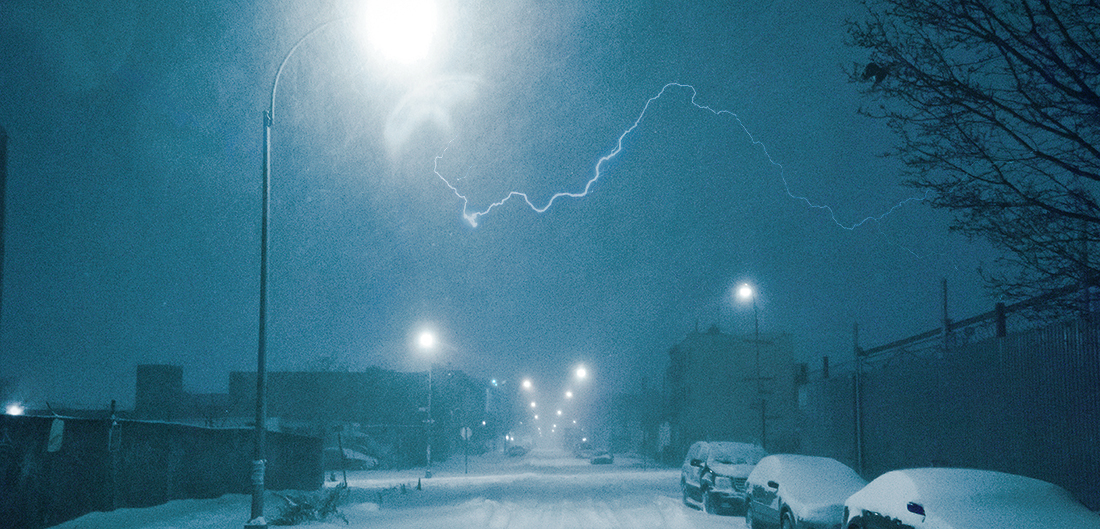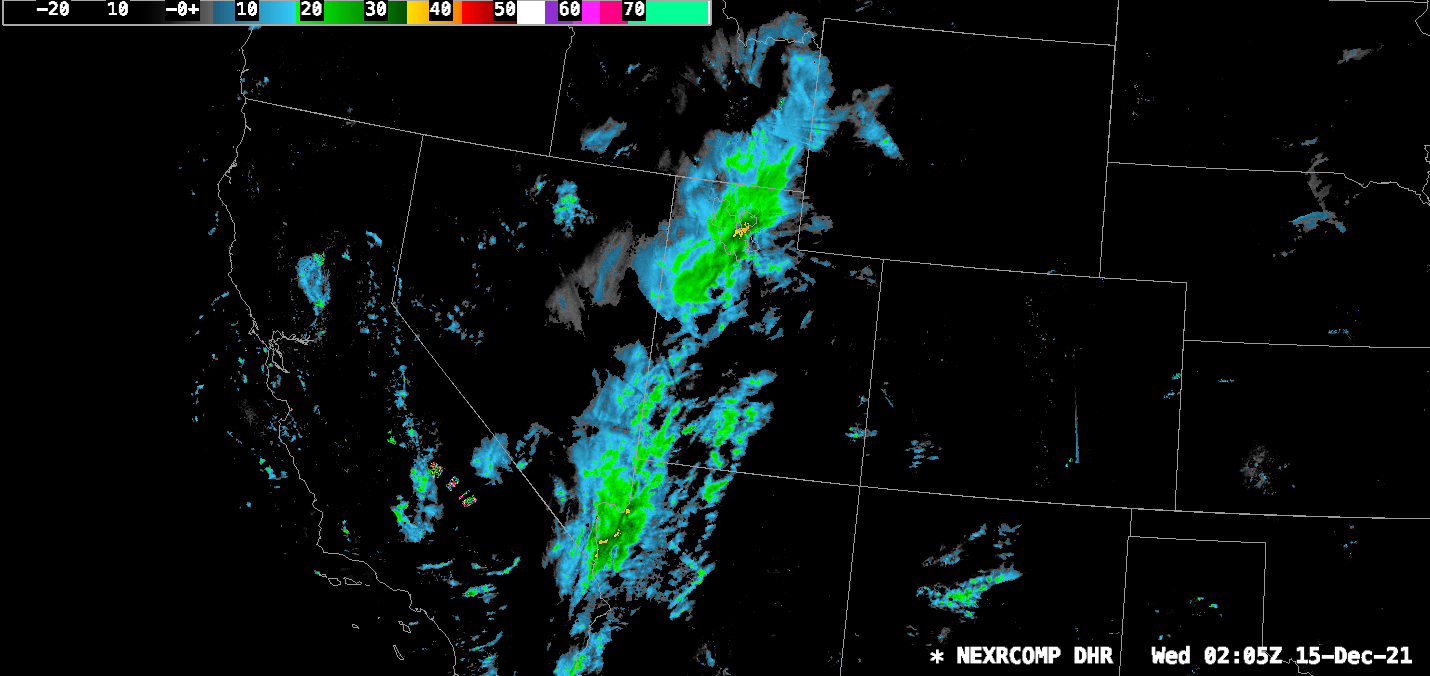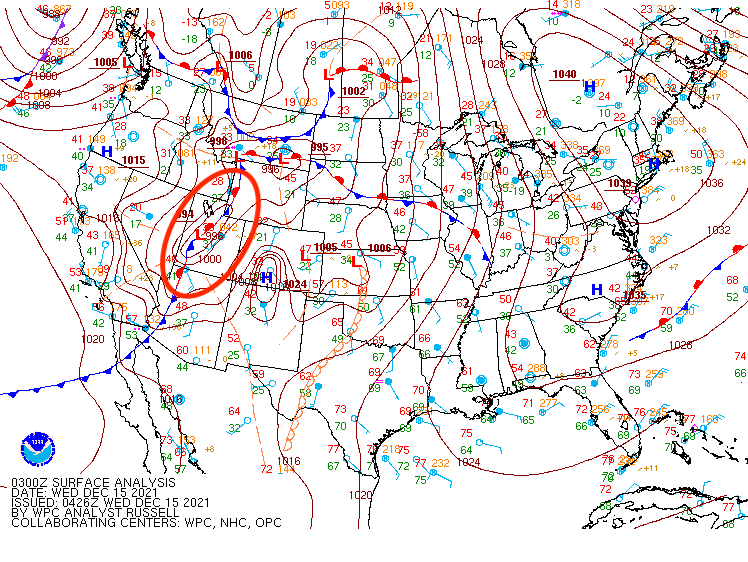
On Tuesday, December 14, Salt Lake City, UT received up to 10″ of snow with a large winter storm that ended up bringing several feet to the Wasatch Mountains. One of the unusual things about this storm in particular was the thunder and lightning that accompanied it. So what is thundersnow and how does it form?
Thundersnow is exactly what it sounds like; essentially thunder and lightning that are associated with snow-bearing winter storms. There are two ingredients necessary for thundersnow: warm, moist air ahead of a potent cold front.
When a warm, moist airmass is in place and a very strong cold front passes through, the colder, denser air slides beneath the warmer air like a wedge. When the warm, moist air is forced up above the colder air sliding beneath it, it cools, the moisture condenses, forms clouds, and falls as rain or snow. This is often coupled with the fact that the air lower down is cooler than air aloft, which creates positive buoyancy and non-forcing instability; in other words, the air “wants” to rise.
Inside these clouds, lots of small ice particles fly around and collide with each other. Each collision builds a little bit of electrical charge inside the cloud until it’s fully charged up and ready to strike. However, the atmosphere acts as an insulator between the ground and the cloud, so enough charge must build up to overcome the insulating effect of the air, allowing lightning to strike and the electrical charge to be dispelled.
The tricky thing about thundersnow is that lots of factors have to be perfectly lined up in order for it to occur. The entire column of air must be cold enough to permit snowfall, but the air must be warm enough and saturated with enough moisture for there to be enough ice available for collisions and the generation of static charge. In fact, on average, only 6.4 thundersnow events are reported in the United States per year.
The thundersnow event in Salt Lake on Tuesday had all the right ingredients. A powerful low-pressure system was sucking up warm, moist air straight from the Pacific Ocean, which was getting rapidly vertically forced by a strong cold front. In the GIF below, you can see the precipitation arriving directly from the warm waters of the Pacific and straight to Salt Lake where the event occurred:

You can also see the trough and associated cold front on the archived WPC surface analysis:

Good article and explanation. During our one “real” storm last year at the end of January in Tahoe (I live on South Shore) I heard what sounded like thunder, but it was coming from the summit (Echo), so I figured they were doing avalanche mitigation…..until the sound came over my house, and then proceeded to move in a NE direction out over the lake. Pretty freaky